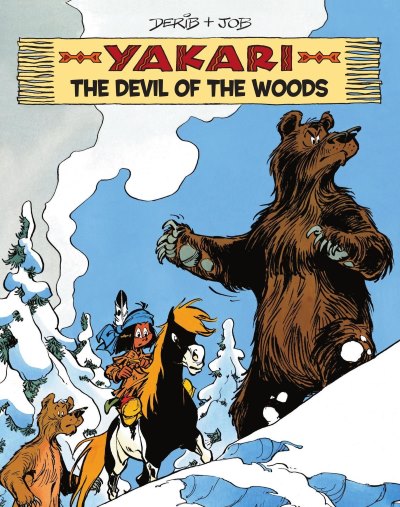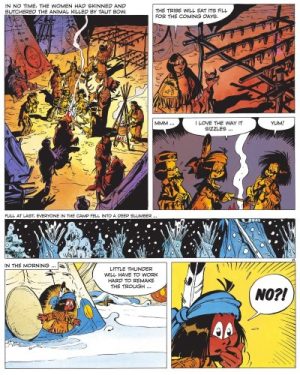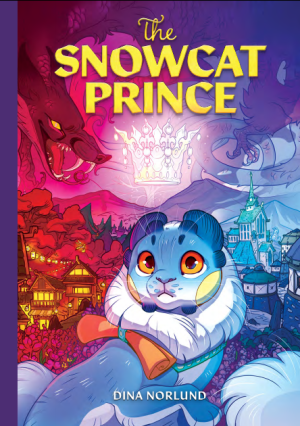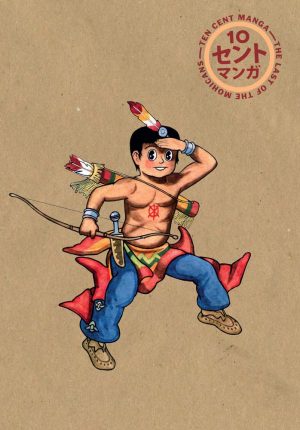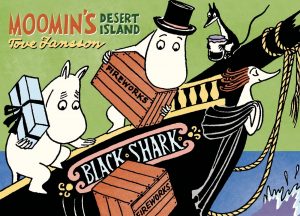Review by Jamie McNeil
It’s been a long hard winter, and the heavy snowfall has affected the Sioux Nation’s ability to forage and hunt, putting pressure on their supplies. A stroke of fortune allows Taught Bow, the group’s best hunter, to take down an elk but the circumstances bother him. It’s as if the elk was panicked by something else. Regardless, the tribe celebrates with a feast, drying the meat that will see them through the cold, but in the morning Yakari awakes to a terrible discovery that all the meat is gone, stolen in the night by some creature. When the men of the village corner the beast with disastrous consequences, Yakari sets out to investigate, soon discovering good reason to fear The Devil of the Woods.
While the 19th Yakari title published in English by Cinebook, The Devil of the Woods is the 20th in the original French. Published in 1994 its serialisation would have coincided with the Thirtieth Anniversary of the first album’s publication in 1973. So, it makes sense that artist Derib (Claude de Ribaupierre) and writer Job (André Jobin) would celebrate this landmark by filling their pages with an ensemble cast from all Yakari’s adventures over the years.
It is well established that as long-time collaborators Derib and Job are exceptional at building a tale, one of the reasons for Yakari’s longevity, starting with innocent tranquil scenes and then building the tension by introducing danger and threat to a level that keeps the reader utterly absorbed. While earlier tales like the previous The Wall of Fire and the much earlier In the Land of Wolves were both tense nailbiters, Devil supersedes them all, displaying the reality of life and death more explicitly than before. It’s sensitively handled, while still emphasising the reality of life in those times.
Derib’s artistic output in the 1990s is impressive, with this album no different. Whether children playing in the snow, the village enjoying a meal together or a dangerous situation, Derib draws you into the frame, engaging the reader with his visuals. Even in a story filled with multiple animals of the same species, he ensures each is identifiable and displays their unique character. All the usual ingredients are there for another amazing story but sadly it doesn’t deliver on its promise.
The reason is one common to all comic genres – putting all the characters into one book doesn’t mean it will be better. As skilled as Derib is you can only work with what you have and in the end the panels become crowded, and it reduces the energy of the illustration. Similarly, Job feels forced to accommodate everyone, which slows things down. It’s not a poor tale and matches the consistent quality of their 1990s output, but with a more focused direction and a lighter cast, Devil would be one of their best.
It’s disappointing that The Devil of the Woods never quite delivers, but it’s still full of charm and adventure and Derib’s art still dazzles despite suffering from a lack of space. The Yakari albums are an understated series, overlooked because it’s perceived as a Western (not really) but should receive wider English language recognition. The artwork is lovely and the themes of living in harmony, showing kindness, and being courageous resonate warmly.
Up next is The Cloud Maker.
